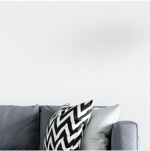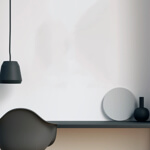Isaac Wigans (Antwerp 1615 - ca. 1663)
The monochrome wall and the lighting accentuate the splendid silver and gilded drinking vessels, which are, however, not very practical for daily use. Don't be fooled by the earthenware jug seemingly evoking the pleasures of the simpler life ...
Isaac Wigans was born in Antwerp in 1615. He was taught by the Flemish history painter Vincent Malo (Cambrai ca. 1595 – 1649 Rome). Although an Isaac Wigans became a member of the Antwerp guild of St Luke in 1651, it is impossible to ascertain whether this was in fact the still life painter, or a younger member from his family. As Wigans was already active as a painter from 1631 onwards and probably would have joined the guild earlier, the latter is certainly a possibility.
Several still life paintings of fruit are known by Wigans, such as the one in the Curtius Museum in Liège; another example is currently in the collection of the Bowes Museum at Barnard Castle. In addition to these, the painter also produced so-called monochrome banketjes, still life pieces in subdued colors which were mostly painted by Dutch seventeenth-century artists such as Pieter Claesz and Willem Claesz Heda. Evidently, some painters in the Southern Netherlands took up the genre. It is not known where Wigans picked up this Dutch influence; he was however a gifted painter with a highly individual and bold style.
The present painting is a beautiful example of a monochroom banketje. Fully signed and in superb condition, it is a testament to the great draughtsmanship of Isaac Wigans, and a very important addition to his oeuvre. While it is certainly true that this type of painting often presents elements of "vanitas" symbolism - the peeled lemon, for instance, being nice to look at but bitter to eat, representing the futility of earthly pursuits - here it is quite possible that the artist also just wanted to represent a richly laden table, which contrasts nicely with the monochrome background. The painting was probably intended to adorn a dining room, confirming the status of its owner.
Provenance
Alfred Brod Gallery, London, 1950;
Duits & Co., Dordrecht/Amsterdam/London;
Private collection, London.
Literature
Nico R.A. Vroom, A modest message as intimated by the painters of the 'Monochrome Banketje’, Schiedam, Interbook international, 1980, no. 750, illustrated.


